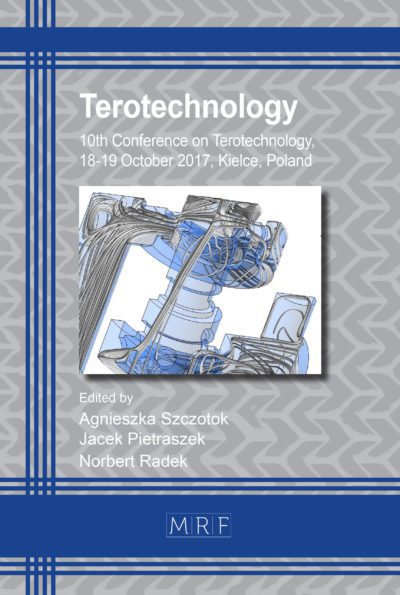Experimental measurement of CF/PEKK tapes heating behavior in the laser assisted automated fiber placement process
LE LOUËT Violaine, LE REUN Adrien, SOBOTKA Vincent, LE CORRE Steven
download PDFAbstract. This work takes place within the framework of the study and control of heat transfer taking place during the heating stage of the Laser Assisted Automated Fiber Placement (AFP) process. Understanding the interaction between the composite tape and the incoming laser radiation is a cornerstone for controlling the thermal history of the laminate. Laser incidence, fibre orientation and lay-up velocity have long been identified as key factors influencing the laser absorption by the composite and its increase in temperature. For the sake of simplicity, homogenous model is often used to describe phenomena inside the composite. However, the study of the radiative behaviour of laminates and tapes has shown that absorption occurs over a volume whose size depends on the carbon fibre architecture within the polymer matrix. Investigating heat transfer at micro scale is then crucial to fully understand the thermal phenomena occurring in the AFP process. In order to investigate heat transfer according to process parameters and especially to the orientation of the tape, a specific bench is developed in order to perform static heating a single composite with a laser diode. A full calibration of the bench was first performed including the response of the IR camera as well as the shape and power imposed by the laser source. Then, measurements for several orientations of the tape (0°,45° and 90°) were performed and thermal response measured and analysed.
Keywords
Heat Transfer, Infrared Camera, Automated Fiber Placement
Published online 4/19/2023, 10 pages
Copyright © 2023 by the author(s)
Published under license by Materials Research Forum LLC., Millersville PA, USA
Citation: LE LOUËT Violaine, LE REUN Adrien, SOBOTKA Vincent, LE CORRE Steven, Experimental measurement of CF/PEKK tapes heating behavior in the laser assisted automated fiber placement process, Materials Research Proceedings, Vol. 28, pp 1897-1906, 2023
DOI: https://doi.org/10.21741/9781644902479-205
The article was published as article 205 of the book Material Forming
![]() Content from this work may be used under the terms of the Creative Commons Attribution 3.0 license. Any further distribution of this work must maintain attribution to the author(s) and the title of the work, journal citation and DOI.
Content from this work may be used under the terms of the Creative Commons Attribution 3.0 license. Any further distribution of this work must maintain attribution to the author(s) and the title of the work, journal citation and DOI.
References
[1] D. H.-J. Lukaszewicz, C. Ward, K.D. Potter, The engineering aspects of automated prepreg layup: History, present and future, Compos. Part B: Eng. (2012) 997-1009. https://doi.org/10.1016/j.compositesb.2011.12.003
[2] Z. August, G. Ostrander, J. Michasiow, D. Hauber, Recents developments in automated fiber placement of thermoplastic composites, Sampe J. 50 (2014) 30-37.
[3] K. Cole, I. Casella, Fourier transform infrared spectroscopic study of thermal degradation in films of poly (etheretherketone), Thermochimica acta 211 (1992) 209-228. https://doi.org/10.1016/0040-6031(92)87021-2
[4] M. Day, D. Sally, D. Wiles, Thermal degradation of poly (aryl-ether-ether-ketone): Experimental evaluation of crosslinking reactions, J. Appl. Polym. Sci. 40 (1990) 1615-1625. https://doi.org/10.1002/app.1990.070400917
[5] P. Tadini, N. Grange, K. Chetehouna, N. Gascoin, S. Senave, I. Reynaud, Thermal degradation analysis of innovative pekk-based carbon composites for high-temperature aeronautical components, Aeros. Sci. Technol. 65 (2017) 106-116. https://doi.org/10.1016/J.AST.2017.02.011
[6] P.-G. De Gennes, Reptation of a polymer chain in the presence of fixed obstacles, J. Chem. Phys. 55 (1971) 572-579. https://doi.org/10.1063/1.1675789
[7] A. Khodaei, F. Shadmehri, Intimate contact development for automated fiber placement of thermoplastic composites, Compos. Part C: Open Access 8 (2022) 100290. https://doi.org/10.1016/j.jcomc.2022.100290
[8] O. Çelik, D. Peeters, C. Dransfeld, J. Teuwen, Intimate contact development during laser assisted fiber placement: Microstructure and effect of process parameters, Compos. Part A: Appl. Sci. Manuf. 134 (2020) 105888. https://doi.org/10.1016/j.compositesa.2020.105888
[9] Hexcel, Datasheet Carbon Fibre AS7.
[10] Arkema, Datasheet Kepstan 7002.
[11] J. Beck, B. Blackwell, A. Haji-Sheikh, Comparison of some inverse heat conduction methods using experimental data, Int. J. Heat Mass Trans. 39 (1996) 3649-3657. https://doi.org/10.1016/0017-9310(96)00034-8
[12] F. Hecht, New development in freefem++, J. Numeric. Math. 20 (2012) 251-265. https://doi.org/10.1515/jnum-2012-0013
[13] M. Villar, C. Garnier, F. Chabert, V. Nassiet, D. Samélor, J. Diez, A. Sotelo, M. Madre, In-situ infrared thermography measurements to master transmission laser welding process parameters of PEKK, Optic. Laser. Eng. 106 (2018) 94-104.













